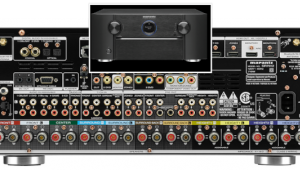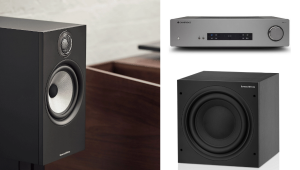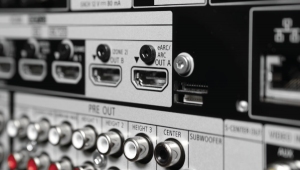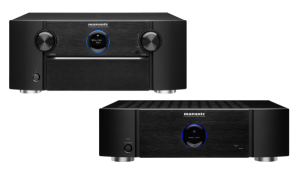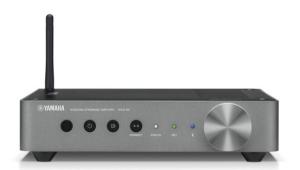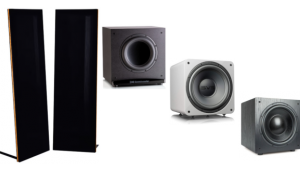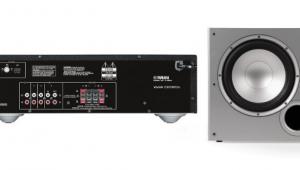Help! Get Me Out of HDMI Hell!
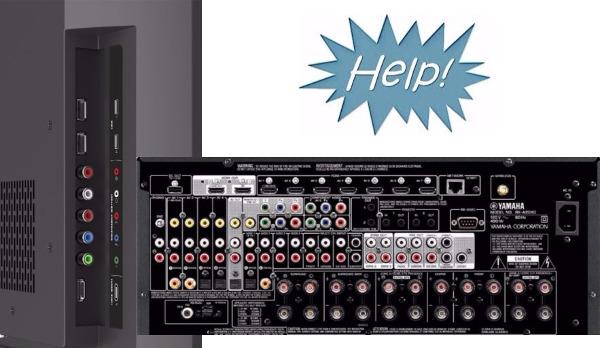
Q I have a 5.1.4 Dolby Atmos setup powered by a Yamaha RX-A2040 AV receiver that’s also connected to a Vizio M55-D0 Ultra HD home theater display. The Vizio only has one HDMI 2.0a port capable of passing 4K/high dynamic range (HDR) signals. The other four HDMI ports are all version 1.4, which is not HDR compatible. My RX-A2040 receiver, meanwhile, has HDMI 2.0 ports that not only don’t support HDR, but lack the HDCP 2.2 copy protection required for passthrough of movies on Ultra HD Blu-ray Disc.
Now for my question. I am currently using an Xbox One S for Ultra HD Blu-ray playback, with the console connected directly to the Vizio’s HDMI 2.0a port. This setup allows me to watch 4K/HDR movies, but because the Xbox only has a single HDMI output, I am forced to use the console’s optical digital audio jack for audio output to the receiver, which means soundtrack options are limited to standard Dolby Digital/DTS. Is there a workaround you know of that will let me keep using the Yamaha? I love my AVR and don’t want to replace it, but these HDMI issues are killing me. —Matt Piper / via email
A Sorry to report this, but your situation is one of an early adopter caught in the crossfire of emerging technologies. In 2014, a slew of new products, including AVRs and a handful of first-gen Ultra HDTV models, shipped with HDMI 2.0 ports that lacked HDCP 2.2 copy protection. Your Yamaha receiver was among these. The situation was made right the following year, with most new products providing updated HDMI 2.0 ports with HDCP 2.2. At that point, things seemed all well and good, but yet another HDMI issue popped up to vex consumers: HDR support. For a receiver to pass Ultra HD signals with HDR, it now needed to be outfitted with yet another new HDMI version: HDMI 2.0a.
The standard workaround to deal with these situations is to do exactly what you are doing: connect a video source directly to the TV and use a separate connection for audio. That’s why the new crop of Ultra HD Blu-ray players feature dual HDMI outputs: You use one to send video directly to the TV and the other to route audio bitstreams, including object audio-based ones like Dolby Atmos and DTS:X, to the receiver. However, as you note, the Xbox One S only has a single HDMI output, which in your case limits you to using the optical digital output for audio.
What I’d recommend for your situation is to buy a new Ultra HD Blu-ray player to use along with your Xbox One S. Why? The new players from Samsung, Panasonic, and Philips all feature dual HDMI outputs, which will let you route audio bitstreams, including hi-res Dolby True HD/DTS-HD Master Audio and object-based Dolby Atmos/DTS:X ones, directly to the Yamaha receiver while simultaneously routing video to the Vizio display. It’s also important to note here that the Xbox One S currently doesn’t support Dolby Atmos/DTS:X, so you’ll need a new player anyway to make the most of your 5.1.4 speaker setup. [Ed. note: Dolby announced yesterday that Dolby Atmos is coming to Xbox One in 2017.]
One other thing: The Vudu TV app, which you can access directly on your Vizio display, features a number of UHD titles with Dolby Atmos soundtracks. Since the HDMI 1 port you’re currently using on the Vizio supports Audio Return Channel, it’s possible to route the Atmos soundtracks from streamed movies
